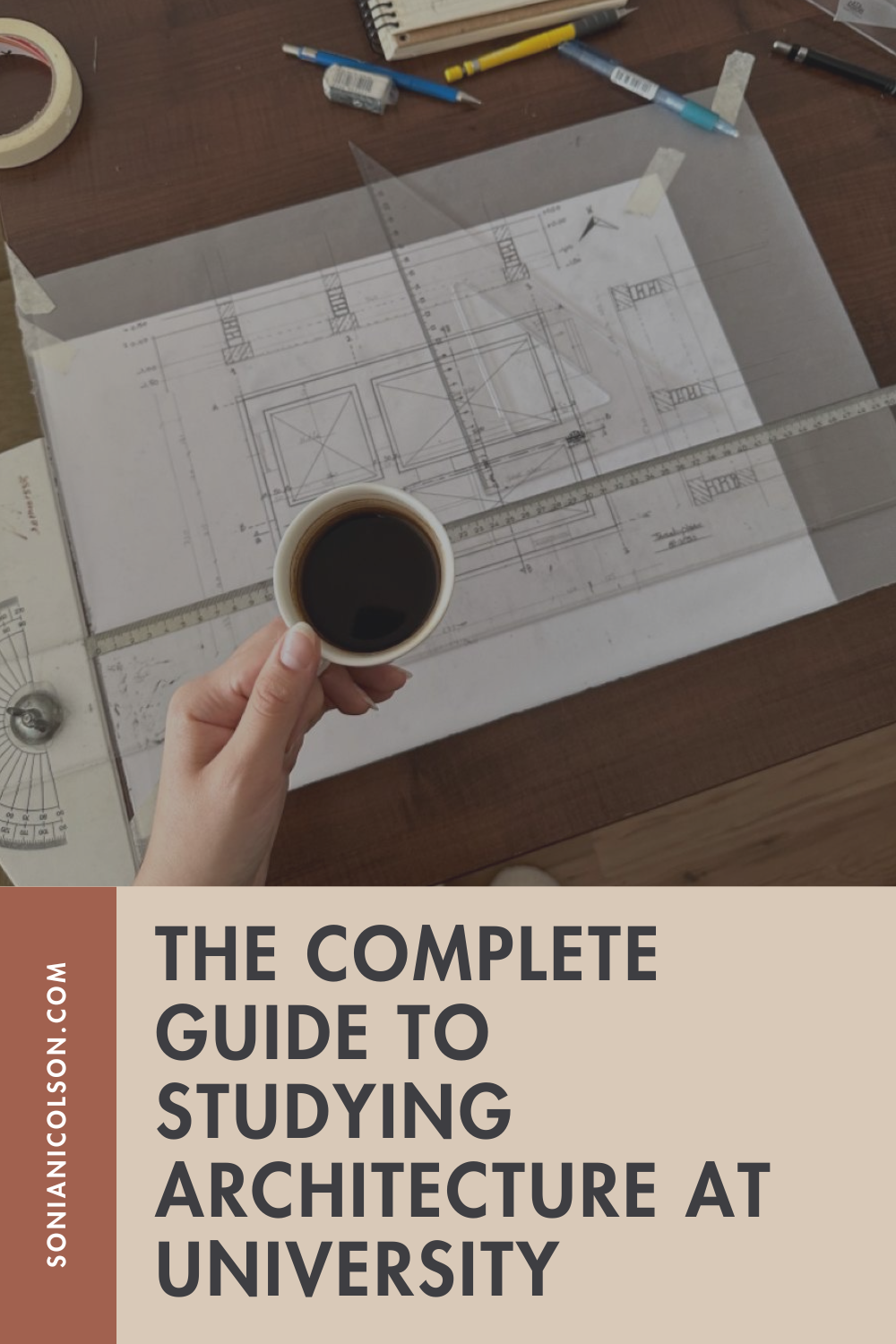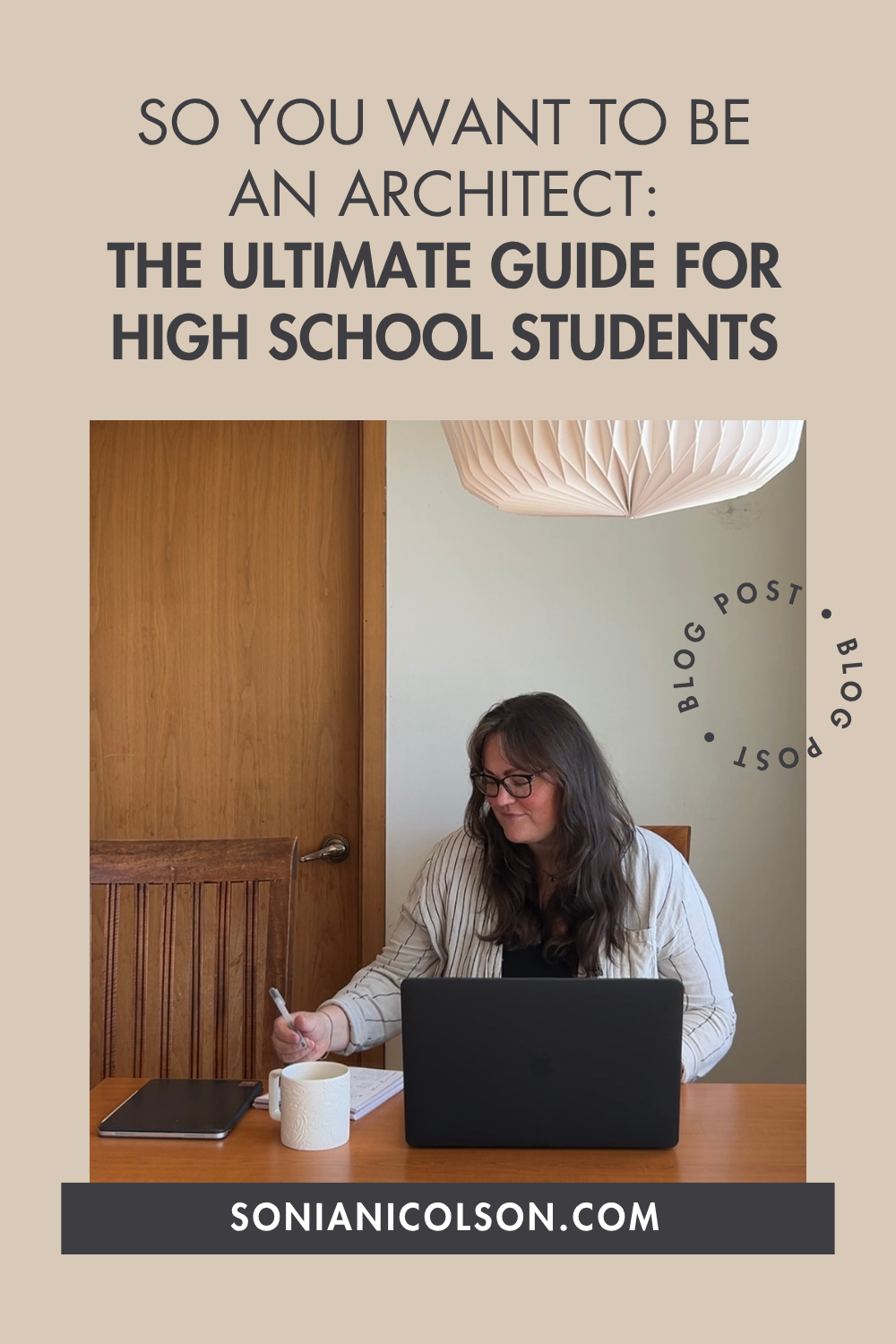The Complete Guide to Studying Architecture at University
/Written by Sonia Nicolson - Architect & Former University Lecturer
If you’re preparing to study Architecture, Interior Architecture, or Design, this guide is for you. As a former University Lecturer and Chartered Architect, I’ve helped hundreds of students choose their courses, prepare portfolios, and settle into university life.
This post combines my best advice from years of teaching - everything from choosing your degree and funding your studies to managing lectures, accommodation, and social life.
1. Choosing Your Subject or Degree
Start with What You Love
Your passion should always guide your choice. Think about the subjects that make you lose track of time - sketching, building, problem-solving, creating, or exploring spaces. Those interests are the foundation of a fulfilling design career.
Ask yourself:
What subjects do I enjoy most?
What topics do I research or explore in my own time?
Can I see myself building a career around this?
Align Your Studies with Your Career Goals
Some degrees, like Architecture or Interior Design, lead to specific career paths. Others, like Fine Art or Design Communication, offer broader possibilities. Research what graduates from each course go on to do, and whether that path excites you.
Think about:
What kind of work do you want to do
What skills will each course help you develop
How does this degree align with your long-term goals
Avoid External Pressure
It’s common for family, friends, or teachers to share strong opinions about what you should study. Their advice can be helpful — but your degree should reflect your interests, not someone else’s expectations.
Ask yourself: Am I choosing this because it feels right for me, or because it’s what others expect?
Do Your Research
Not all universities offer the same quality of education or teaching style. Investigate:
Which schools specialise in your subject
Who teaches the course - do they have industry experience?
What facilities are available (workshops, studios, software)
Student-to-staff ratios and project-based learning
Tip: Visit open days and ask questions about the projects you’ll complete, the support you’ll receive, and the kind of work graduates produce.
2. Deciding Whether to Take a Gap Year
A gap year can be a valuable time to rest, explore, or gain experience before starting university. It doesn’t have to be a full year, even a few months can make a difference.
What You Could Do
Travel & Explore: Experience new cultures or architecture abroad.
Work Experience: Gain insights into professional practice.
Volunteer: Contribute to projects that make an impact.
Learn New Skills: Take online courses or start creative projects.
After graduating with my BA, I took time to travel through Asia and Australia. That break helped me reconnect with my creativity and return to architecture with a new sense of purpose.
Benefits of a Gap Year
Clarity about your goals and motivations
Real-world skills that improve employability
Confidence, independence, and resilience
Fresh energy for when you start your studies
How to Plan Your Gap Year
Set clear goals. What do you want to gain from it?
Create a realistic budget.
Stay in touch with your chosen university.
Be open to new opportunities - it’s your time to grow.
3. Applying to University: Schools, Backups & Funding
Understanding Your Options
When applying to higher education, you’ll see terms like college, university, and polytechnic. Each offers a slightly different experience:
Colleges often focus on diplomas and smaller class sizes.
Universities offer broader research opportunities and degrees.
Public/Private Institutions may differ in size, funding, and teaching style.
Have Backup Schools
Even the strongest applicants need options. Applying to a mix of schools (dream, target, and safety choices) reduces stress and increases your chances of acceptance.
Funding Your Studies
There are several ways to make university more affordable:
Scholarships & Grants – based on merit or financial need
Student Loans – check interest rates and repayment plans
Work-Study Programs – earn while you study
Part-time Jobs or Summer Work – gain experience and save before term starts
Tip: Ask each university’s admissions or finance team about specific architecture or design scholarships - many are underused each year.
4. What to Expect Academically
Lectures
Large, structured sessions where you’ll learn key theories, history, and technical foundations. Take notes and highlight key themes, these often inform essay or exam questions.
Seminars
Smaller classes for discussion, debate, and reflection. Be prepared to contribute ideas and ask questions, it’s where real learning happens.
Group Work
Especially in architecture, collaboration is essential. You’ll learn to share ideas, manage responsibilities, and combine skills to produce a collective project.
Studio Culture
Architecture and design students spend long hours in studios. This is where you’ll design, draw, make models, and present your ideas. Studio becomes your second home (and your first network).
Developing Effective Learning Habits
Keep a planner or digital calendar for deadlines.
Review lecture notes weekly instead of cramming later.
Ask questions early if you’re unsure, tutors are there to help.
Learn how to give and receive feedback constructively.
5. Campus Life & Accommodation
Living on Campus
Convenient access to classes and facilities
Great for meeting people and building community
Usually includes utilities and student support
Living Off Campus
More independence and privacy
May be cheaper, but consider extra costs (transport, food, utilities)
Offers a real-world experience of budgeting and responsibility
Homesickness Happens
Feeling homesick is completely normal, especially in your first few months. Here’s how to manage it:
Stay in touch with friends and family
Make your space feel personal
Get involved in clubs or design societies
Talk about how you feel, you’re not alone
Remember: Every student feels out of place at first. In time, you’ll find your rhythm and your people.
6. Balancing Social Life and Studies
Architecture is known for its long hours and demanding projects, but your well-being matters too. Joining clubs, attending events, or exploring your city can recharge your creativity and build lifelong friendships.
Join societies or creative clubs
Attend networking events or guest lectures
Set healthy boundaries with your time
Remember to rest, burnout helps no one
7. Building a Foundation for Success
Stay Organised
Use planners or project boards to manage submissions and deadlines.
Look After Yourself
Eat well, get enough rest, and take breaks - creative thinking thrives on balance.
Connect with Tutors and Peers
These relationships often shape your opportunities later. Be curious, show initiative, and stay open to feedback.
Start Your Portfolio Early
Document your projects as you go, don’t wait until the end. Include sketchbooks, model photos, and process work. It shows how you think, not just what you produce.
Free Resources to Help You Start:
Final Thoughts: Designing Your Own Path
Studying architecture is both challenging and deeply rewarding. You’ll learn how to see the world differently - to notice space, light, texture, and human experience in everything around you. Every designer’s journey is unique. Trust your curiosity, stay open to learning, and remember: it’s okay not to have it all figured out yet.
This is the beginning of your creative career, enjoy it.
Next Step: Build Your Portfolio with Confidence
Now that you know what to expect from studying architecture, it’s time to get your portfolio ready. Your portfolio is the key that opens doors to university offers, internships, and creative opportunities.
I’ve created a range of free and paid resources to help you:
Portfolio Preparation Course | learn step by step how to plan, design, and present a portfolio that impresses tutors.
Portfolio Confidence Review™ | get personalised feedback on your work before you submit.
Free Student Resources:
Explore them all at sonianicolson.com/resources


























